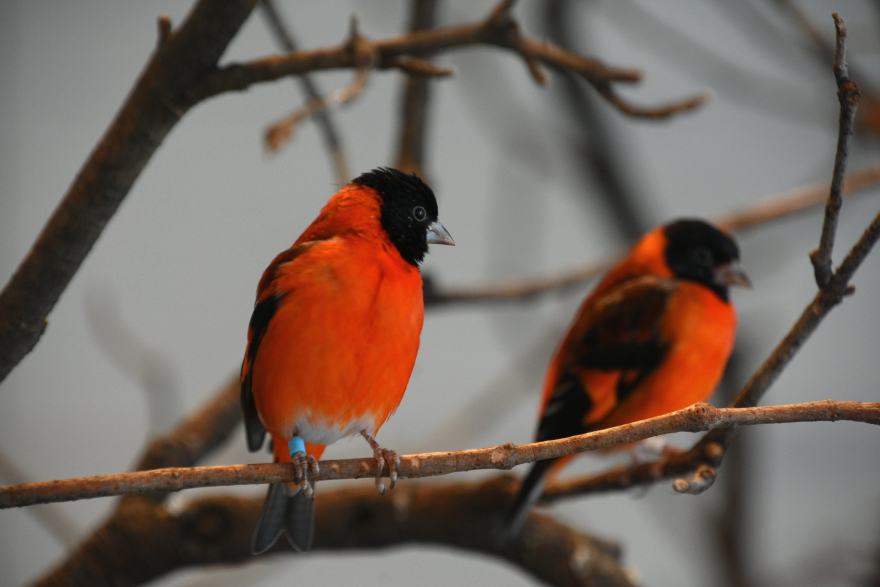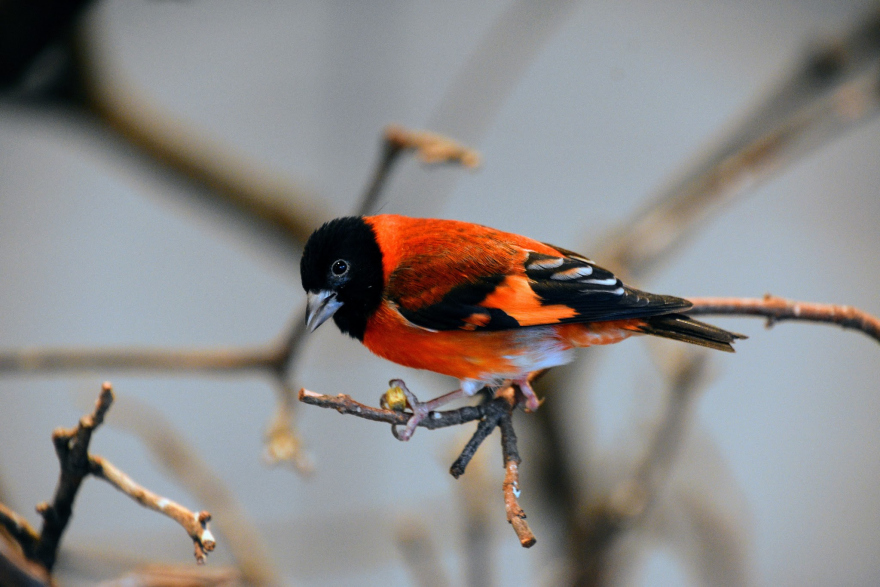The red siskin—known also as the hooded siskin or Venezuelan siskin—is a true finch species native to Colombia and Venezuela. They have become endangered in their native habitat due to excessive trapping for the pet trade. Ironically, the breeding success experienced by private aviculturalists has helped to establish reintroduction programs in their native range.

Housing & Compatibility
Red siskins do best in a large planted aviary, either as single pairs or as part of a flock. They seem to cohabitate reasonably well with other placid species, but as always, monitor for signs of aggression and take steps to manage it.
They should not be housed with with any other member of the “true finch” family, as they will readily hybridize. This family includes canaries, goldfinches, chaffinches, and dozens of other species.
Extra caution should be taken to protect a red siskin aviary from draughts and excessively cold temperatures.
Diet & Feeding
A quality finch seed mix containing a large amount of canary seed forms the basis of the red siskin’s diet. Sprouting seed increases its nutritional value and is an effective way to improve your bird’s health and breeding performance. Freshly grown green seed heads should also be offered frequently.
A small amount of leafy greens should be provided throughout the year. Kale, bok choy, endive, and silverbeet are the most nutritious and are very easy to grow. Finely chopped apple is an unexpected red siskin favourite.
Live food is an essential component of the red siskins diet and should be provided regularly during the breeding season. Outside of the breeding season, supplemental live food feeding should be sufficient. Mealworms, maggots, termites, and small crickets will be consumed readily. Commercial soft finch food mixes can also be provided for an added nutrient boost.

Breeding Red Siskins
Red siskins construct a cup-shaped nest in tree, shrub or a commercial canary nest. The nest will be constructed from fine grass and lined with feathers. The nest is usually constructed only a few feet off the ground.
Red siskins breed in spring and autumn. The hen can produce 2 to 3 clutches per year, and the typical clutch size is three eggs. The hen will incubate the eggs two weeks, typically without any assistance from the cock. Young birds will fledge at three weeks of age and be fully independent at six weeks of age.
It is popular to foster red siskin eggs under canaries. This frees the hen to immediately start laying more eggs, but can result in species-confused chicks. Placing the chicks into an aviary housing red siskins from a young age can prevent this issue.
Hybridisation
Red siskins should not be housed with other members of the “true finch” family, and hybridisation can occur. This includes canaries, other siskins (yellow, European), goldfinches and greenfinches.
The red-factor canary was originally produced by crossing a domesticated canary with a red siskin.
Sexing Red Siskins
Can be easily visually sexed at maturity. Females have much duller colours and grey heads instead of black.
Mutations
There are no established red siskin mutations in Australia. Internationally, birds are sometimes seen with additional black plumage, or lighter fawn/grey plumage. Be wary of any supposed red siskin mutation that could actually be an interspecific hybrid.
Health & Lifespan
Red siskins originate from hot and humid conditions, so they can struggle to endure cold winters.
As avid consumers of live food, siskins are quite susceptible to worms and parasites. External parasites common to canaries, such as air sac mite and scaly leg mite, can also cause problems for siskins. Moxidectin or Ivermectin diluted into the drinking water and offered 2-4 times a year can protect against most parasite issues.
A red siskin can be expected to live for approximately 7 years. Cock birds generally outlive hens.